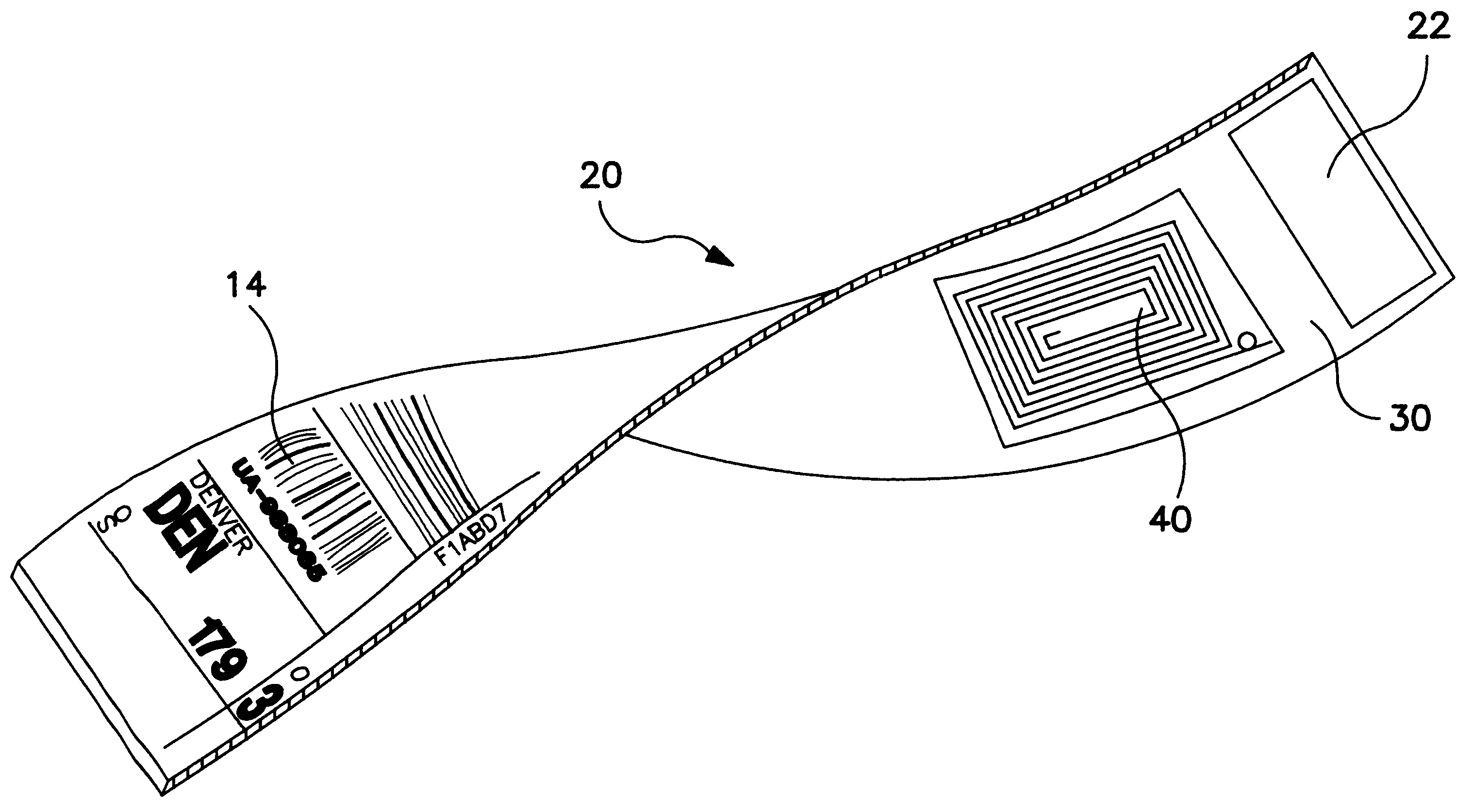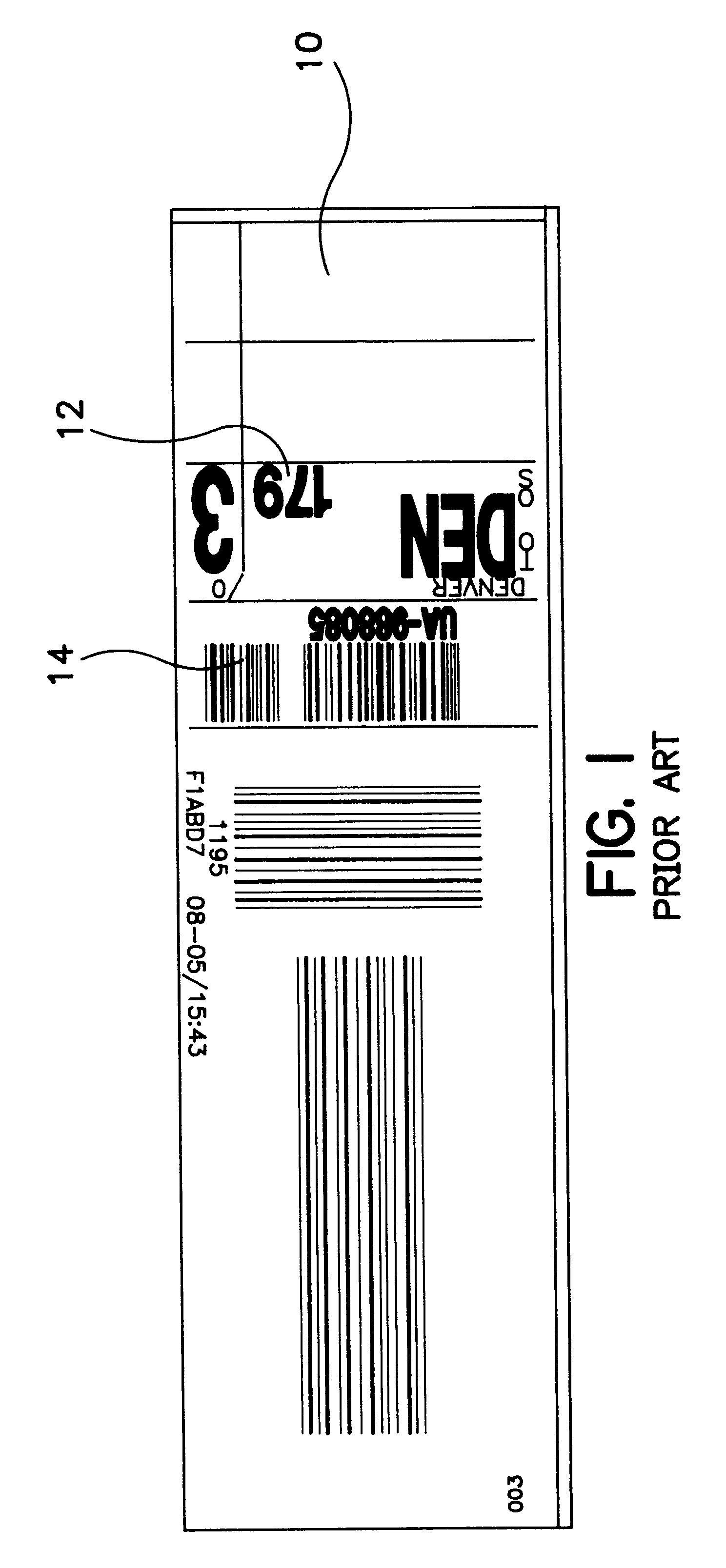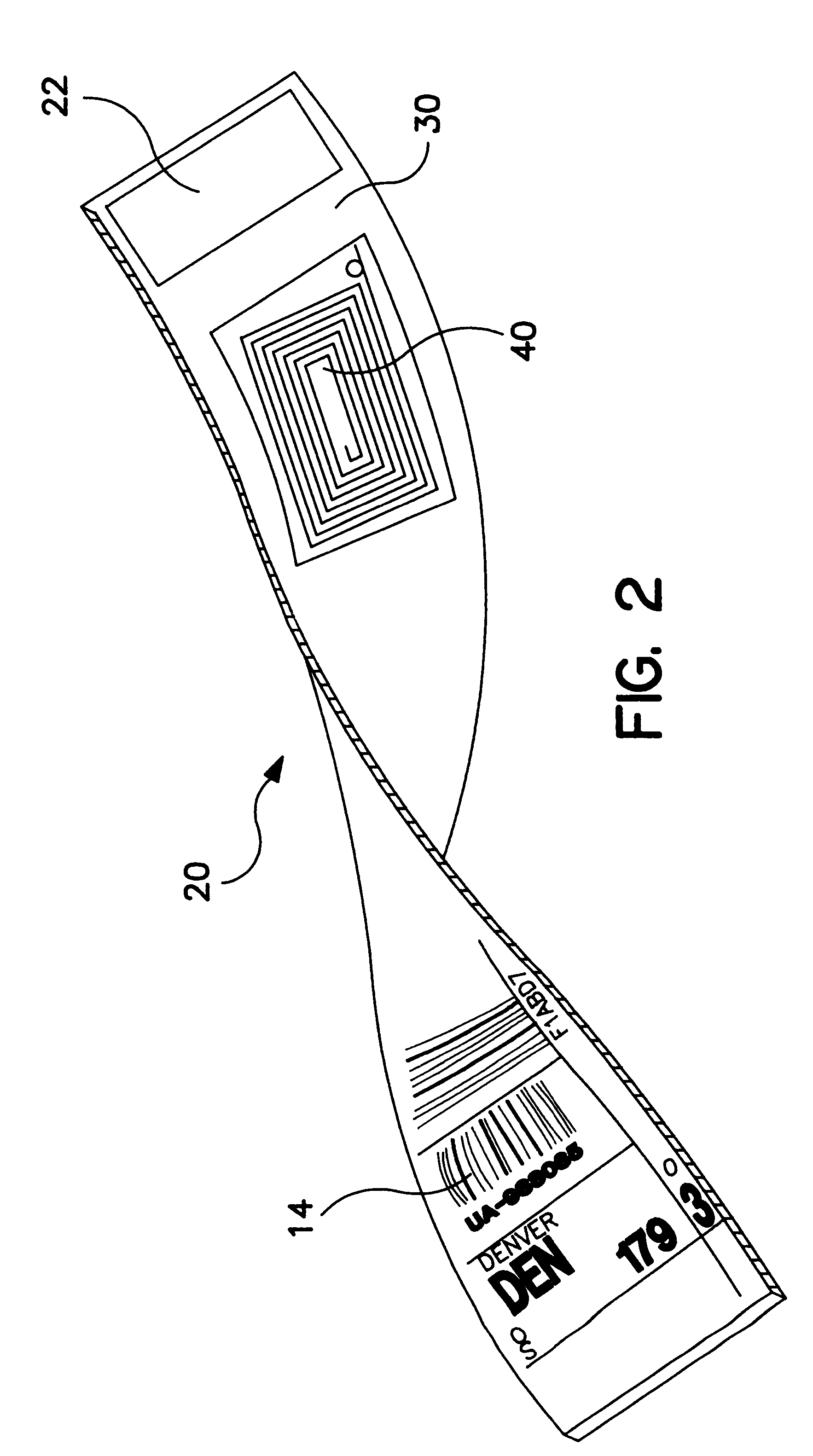Electronic identification tag
a technology of electronic identification and identification tag, which is applied in the field of ultra-thin electronic identification tag, can solve the problems of misdirected, lost, or delayed luggage, do little to avoid initial misdirection, and traditional luggage identification system suffers from the drawbacks inherent in their simplicity
- Summary
- Abstract
- Description
- Claims
- Application Information
AI Technical Summary
Benefits of technology
Problems solved by technology
Method used
Image
Examples
Embodiment Construction
The apparatus of the invention broadly comprises an extremely thin electronic identification tag that reliably transmits a radio frequency (RF) signal even at comparatively extended transmission ranges. The tag signal broadcast by the invention is receivable by an RF receiver for processing by digital data processors, thereby permitting automated evaluation of various aspects of the tag, e.g., its movement through a transportation system. The intended use of the inventive identification tag is in conjunction with common carriers such as airplanes, and their associated terminals and baggage transportation systems. In this disclosure, "airplane" or "aircraft" is used to denote any mode of mass carriage of cargo, most especially people, and is intended to include, without limitation, passenger planes, buses, and trains. The inventive identification tag is affixed to luggage, and / or carried by passengers, to assure that luggage and passengers are properly routed, or recovered and redire...
PUM
 Login to View More
Login to View More Abstract
Description
Claims
Application Information
 Login to View More
Login to View More - R&D
- Intellectual Property
- Life Sciences
- Materials
- Tech Scout
- Unparalleled Data Quality
- Higher Quality Content
- 60% Fewer Hallucinations
Browse by: Latest US Patents, China's latest patents, Technical Efficacy Thesaurus, Application Domain, Technology Topic, Popular Technical Reports.
© 2025 PatSnap. All rights reserved.Legal|Privacy policy|Modern Slavery Act Transparency Statement|Sitemap|About US| Contact US: help@patsnap.com



